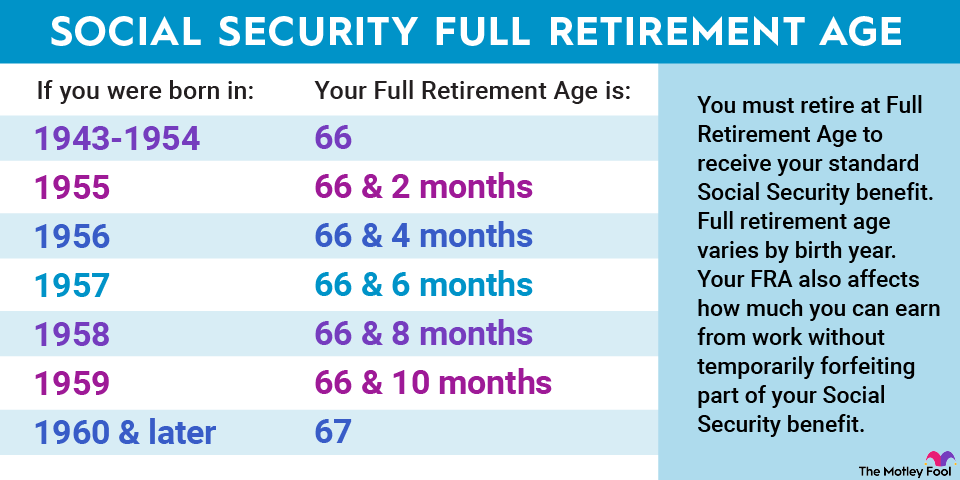Since its ongoing monthly payments began in 1940, Social Security has been one of the United States’ most essential social programs. For some of its roughly 53.5 million retiree recipients, Social Security is purely supplemental income, but for many, it’s a vital source of retirement income that keeps their basic needs met.
Regardless of the role that Social Security plays in your retirement finances, it’s important to have an idea of how much you’ll receive so you can begin planning your retirement budget accordingly. If you’re some years from retirement, it may be tough to get an exact estimate, but you can use averages at particular claiming ages to get a rough idea of what to expect. In this case, let’s take a look at age 65.

How Social Security calculates your monthly benefit
Social Security calculates your monthly benefit using your average earnings during the 35 years when your earnings were the highest.
It adjusts your earnings for inflation (called “indexing”) to reflect their value in today’s dollars and then divides the total number of months in those 35 years to get your average indexed monthly earnings (AIME). If you don’t have 35 years’ worth of earnings, Social Security uses zeros for the missing years to calculate your average.
Next, Social Security applies a formula using bend points (which are adjusted annually) to determine your primary insurance amount (PIA), which is the monthly benefit you’ll receive if you claim at your full retirement age.
The formula involving bend points can be a bit confusing, so an easier way to determine your primary insurance amount is to check your earnings record on the Social Security Administration site (SSA.gov) and use its online benefits calculator.
The role of your full retirement age in determining your benefit amount
The last part of determining your monthly benefit is when you claim relative to your full retirement age, which is based on birth years as follows:


Although most Social Security newcomers’ full retirement age is 67, you can begin claiming benefits as early as 62 (reducing monthly benefits) or delay them until 70 (increasing monthly benefits).
If you’re within 36 months of your full retirement age, the Social Security Administration reduces your monthly payout by 5/9 of 1% for each month you claim early. Beyond 36 months, the program reduces your benefits by 5/12 of 1% each month. With a full retirement age of 67, someone claiming benefits at 65 would see their payout reduced by roughly 13.33%.
According to the latest data from the Social Security Administration, the average monthly benefit for someone claiming at age 65 is $1,505, which works out to $18,060 annually.
It’s also worth noting that due to the average lifetime earnings of men and women, the average benefit at 65 can vary. For men, the average benefit at 65 is higher at $1,671; for women, it is $1,356.
One piece of the retirement income puzzle
At just over $18,000 annually, the average Social Security benefit for a 65-year-old isn’t enough to fully support many people. That’s why, ideally, Social Security is just one of your retirement income sources and not the only one.
Of course, not everyone has that privilege because of life circumstances, but for those with jobs that offer a 401(k) or earn enough income, intentionally diversifying your retirement income can provide greater financial security.
A great source is an IRA, which you can open on your own and doesn’t have to be through an employer like a 401(k). By using sources like an IRA — whether Roth, traditional, or both — you can take advantage of their tax benefits as well as create an additional income stream that puts you closer to financial flexibility in retirement.
There’s no such thing as overpreparing for retirement, so use those years leading up to it to build as big of a nest egg as possible. You’ll likely be thanking yourself in retirement.
The $22,924 Social Security bonus most retirees completely overlook
If you’re like most Americans, you’re a few years (or more) behind on your retirement savings. But a handful of little-known “Social Security secrets” could help ensure a boost in your retirement income. For example: one easy trick could pay you as much as $22,924 more… each year! Once you learn how to maximize your Social Security benefits, we think you could retire confidently with the peace of mind we’re all after. Simply click here to discover how to learn more about these strategies.
View the “Social Security secrets” ›
The Motley Fool has a disclosure policy.
This Is the Average Social Security Benefit for Age 65 was originally published by The Motley Fool
Source Agencies
